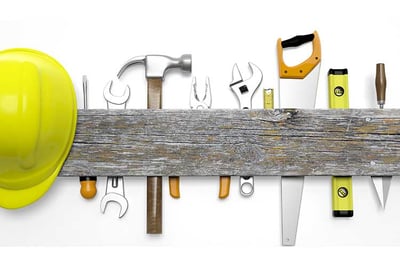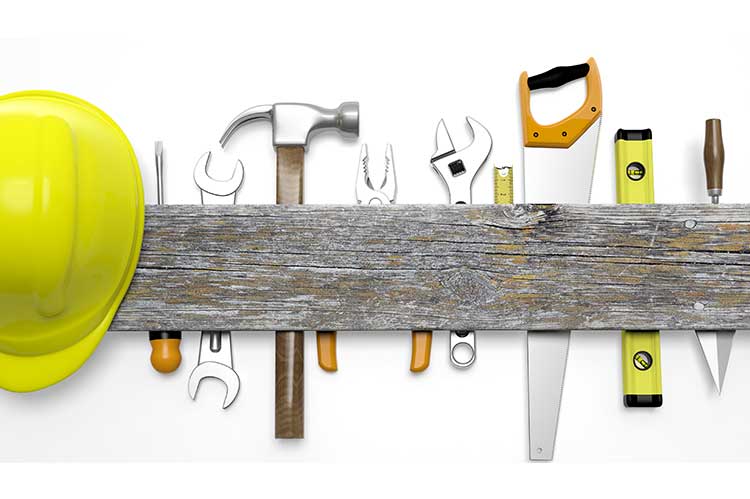 Earlier this month, we wrote an article about some of the most common pipe hanger and support installation mistakes we often see in the field and suggested fixes. Now, we'd want to expand on that article and talk about another issue we often see in the field: improper roof equipment supports installation. Specifically, heavy equipment supports including those for AC units, signs, solar panels, telecom equipment, air handlers, and chillers.
Earlier this month, we wrote an article about some of the most common pipe hanger and support installation mistakes we often see in the field and suggested fixes. Now, we'd want to expand on that article and talk about another issue we often see in the field: improper roof equipment supports installation. Specifically, heavy equipment supports including those for AC units, signs, solar panels, telecom equipment, air handlers, and chillers.
The sheer size and weight of these items not only creates a potentially dangerous situation for building occupants and the structural integrity of the building itself, the high initial cost of installing these big-ticket items along with the additional time, and expense necessary to replace them after they have been installed incorrectly should further encourage installation technicians to do the job right the first time. Unfortunately, this not always the case, for several reasons.
Here are few key things to watch for whenever any contractor is installing roof equipment supports on your building:
1. All Rooftops are Not the Same
The size, shape, and type of material used to support heavy rooftop equipment should not only be proportional to the unit being supported, but also to the size, shape, and location of the rooftop itself. One type of support may work well on a flat, metal roof but be completely ineffective on a sloped, vinyl roof. Installation crews are expertly trained on the operation and repair of their equipment, while training on different types of roofing materials and structural components are often acquired on the job.
Pro Tip: Don’t assume that an equipment installation crew understands your rooftop environment as well as they ought to, or as well as your facility manager does. It’s likely that the crews’ main priority is to get on the roof, get the unit up, and running and get out as quickly as possible. Also, take care that the people who are installing the equipment are employees of the company you purchased the unit from. Otherwise, you are taking a chance that the crew has been outsourced and not necessarily qualified or trained on this particular piece of equipment.
2. Vibrating Units Require Special Attention
When supporting rooftop equipment that is motorized or vibrates when it is operational, the device(s) used to support it must be able to absorb the energy while also providing adequate, equally distributed stability for the entire unit. If you do not have the roof equipment supports in place to mitigate equipment movements or vibrations, it's possible that the unit will not operate as efficiently as it should and could even cause the unit to fail prematurely.
Some common signs to watch for include observing a change in the pitch or sound that the unit makes when operating, as well as noticing strained or off balanced piping, conduit, or ductwork 'down the line' from where it is attached to the unit.
3. Flexible Roof Equipment Supports for Changing Temperatures
Supports must also be able to expand and contract according to temperature and humidity levels in order to maintain a reliable connection with the equipment and the surface of the roof. Rooftop equipment should be regularly inspected to determine that neither the support or piece of equipment has shifted from its originally position. Telltale signs to watch for include scratches or skid marks on the roof surface and visible listing of unit being supported. Lastly, supports should remain in place at all times and should be tested regularly to ensure that they perform under high stress conditions such as when the unit starts up, shuts down, or when it is operating at maximum power.
Pro Tip: If a contractor shows up with nothing more than a few pieces of 4x4 wooden blocks to support their equipment, it's time to find another contractor. Over time - and probably sooner than you think - those blocks are going to shift and take whatever is on top of them with them. Not to mention poorly designed supports can dig into the roofing membrane creating a whole new set of problems!
4. What Lies Beneath Matters
Even the most ultra-efficient equipment is going to generate some amount of noise, vibration, or force air movement. Building owners and facilities crews should always consider what (or who) is located directly underneath rooftop equipment. Excessive heat and noise can be a serious distraction, and potentially a health hazard for employees with offices or workplaces adjacent to commercial HVAC and other industrial type equipment. This is also a serious consideration when planning new construction or retrofitting a multi-family residential building, hotel or retail space. Owners should also be aware of any material differences — visible or otherwise — of the roofing system itself.
It's possible, for instance, that a roof system may contain a higher density, stronger poly membrane around the outside perimeter of the building. These high performing membranes are designed to hold up better to sustained winds and UV rays, however are generally more expensive to install. As a result, contractors will recommend using the high performing material in only the areas that are likely to experience the harshest conditions. Therefore, it's important to have some type of documentation that describes exactly which areas of the roof have higher performing membranes and which do not.
Red flag: Just because it looks the same (on top) does not mean that the entire roof surface is made of exactly the same material. Simply, measuring the thickness of a roof membrane on the perimeter does not guarantee that the membrane is the same thickness across the board.
The Bottom Line
Work with your contractor to develop a custom roofing system that provides the protection you need at a price that you can afford. If this means creating a hybrid system that uses different grades of roofing materials, be sure to clearly document where these materials are located.
The bottom line for building owners and facility staff is to be prepared to ask a lot of questions to anyone who is installing something on the roof. Remember, every installation is different — even when the same piece of equipment, installed in the same neighborhood, on a similar type of roof — and should be approached in a way that clearly identifies the most effective way to secure and support that particular piece of equipment, in a specific, well thought out location, on your particular rooftop. Don’t settle for anything less.
Photo Credit: zzpza





